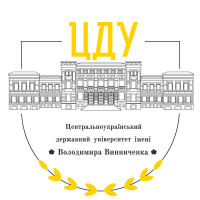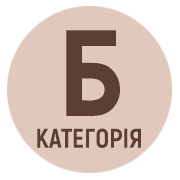THE MOTHER ARCHETYPE IN THE NOVEL OF MARIA MATHIOS «HARDLY EVER OTHERWISE»
DOI:
https://doi.org/10.32782/2522-4077-2022-203-4Keywords:
Maria Mathios, Jung, archetype, Great Mother, female image, psychopoetics.Abstract
This article examines the representation of the Mother archetype in the novel “Hardly Ever Otherwise” written by the Ukrainian writer Maria Mathios. She explores and reinterprets it deeply in her prose, because as a woman she is able to directly identify herself with this archetype. The theoretical part of the article presents different views of scientists on the concept of archetype and the evolution of this term in the Ukrainian and world scientific discourse. The article presents various manifestations of the archetype of the mother in the works of Mathios, which change depending on the life circumstances and personal characteristics of the heroines. We attempted to analyze several female characters (Vasilyna, Petrunya, Teofila), on whose material we can trace the most vivid manifestations of the archetype of the Mother. In particular, this novel can be used to talk about the Great Mother and mother-lovers. On the example of Vasylyna, we consider the embodiment of the Archetype of the Great Mother; on the example of Petruni – the consequences of the impossibility of being realized in motherhood and obsession with this idea (surrogate archetype of the Mother). Teofila embodies maternal sacrifice and self-sacrifice. This character, unlike the others, receives a detailed portrait characterization with the help of a painterly author's image, similar to the classic depictions of the Madonna and other embodiments of the maternal principle in world artistic practice. In this way, the author represents the collective image of the Mother at the end of the work. Overall, the article highlights the importance of the mother archetype in the works of Maria Mathios and the different ways it is depicted and explored. Examining the Mother archetype also allows for a deeper understanding of the cultural and historical context in which the novel is set, and how these themes continue to resonate today. These studies are an important contribution to the study of the work of Maria Mathios and the representation of the mother archetype in literature in general. This topic has prospects for further research, in particular in the direction of the correlation of the author's creative figure with this archetype and the proportionality of Maria Mathios as a woman and the embodiment of her characters.
References
Базів Л.М. Амбівалентність архетипу матері в українській модерній літературі (на матеріалі творчості Лесі Українки, М. Коцюбинського, В. Винниченка та О. Кобилянської) : автореф. дис. ... канд. філол. наук : 10.01.01 ; Київ. ун-т ім. Бориса Грінченка. Київ, 2013. 18 с.
Гончарук В., Гончарук В. Жіночі образи у творчості Тараса Шевченка. Філологічний вісник Уманського державного педагогічного університету імені Павла Тичини. 2014. Вип. 5. С. 120–125.
Даценко Я. Психопоетика творчості Григора Тютюнника : дис. … канд. філол. наук (доктора філософії) ; Центральноукраїнський державний педагогічний університет імені Володимира Винниченка. Черкаський національний університет імені Богдана Хмельницького. 2019. 214 с.
Івашина О.О. Марія Матіос: підходи до осмислення психологізму творчості (на матеріалі роману «Майже ніколи не навпаки»). Слово в сучасній науковій парадигмі: євроінтеграційний контекст : тези доп. І міжнар. наук.-прак. конф., 24–25 листопада 2022 р. Кропивницький, 2022. C. 75–79.
Лебединцева Н.М. Архетип Великої Матері у поетичному світі 1980-х років. Наукові записки НаУКМА. Філологічні науки. 2001. Т. 19. С. 56–64. URL: http://ekmair.ukma.edu.ua/bitstream/ handle/123456789/9279/Lebedyntseva_Arkhetyp_Velykoyi_Materi.pdf?sequence=1&isAllowed=y
Матіос М. Майже ніколи не навпаки. Сімейна сага в новелах ; вид. 2-е. Київ : А-БА-БА-ГА-ЛА- МА-ГА, 2022. 224 с.
Михида С.П. Психопоетика українського модерну: проблема реконструкції особистості письменника : монографія. Кіровоград : Поліграф – Терція, 2012. 357 с.
Міщенко М.М. Українські національні архетипи: від колективного несвідомого до усвідомленої національної ідентичності (до актуальності методології аретипичного аналізу). Вісник Харківського національного університету ім. В.Н. Каразіна. Серія «Філософія. Філософські перипетії». 2014. № 1130(51). С. 90–94. URL: http://repository.kpi.kharkov.ua/handle/KhPI- Press/16629
Моклиця М.В. Основи літературознавства : посібник для студентів. Тернопіль : Підручники і посібники, 2002. 192 с.
Потебня О.О. Естетика і поетика слова : збірник. Київ : Мистецтво, 1985. 301 с. URL: http://irbisnbuv. gov.ua/ulib/item/UKR0001479
Процик І.В. Архетип і символ: проблеми визначення та взаємодії. Актуальні проблеми слов’янської філології. Серія «Лінгвістика і літературознавство». 2011. Вип. XXІV. Ч. 2. С. 368–377.
Процик І.В. Поняття архетипу в науковій літературі: генетико-теоретичний аспект. Вісник Запорізького національного університету. Філологічні науки. 2009. № 2. С. 56–67. URL: https://web.znu.edu. ua/herald/issues/2009/fil_2009_2/056-67.pdf
Тиховська О. Архетипна образність балад Т. Шевченка. Науковий вісник Ужгородського університету. Серія «Філологія. Соціальні комунікації». 2014. Вип. 1(31) С. 239–244. URL: https://dspace. uzhnu.edu.ua/jspui/handle/lib/766
Фрай Н. Архетипний аналіз: теорія мітів. Антологія світової літературно-критичної думки / ред. В.М. Зубрицька. Львів : Літопис, 1996. С. 111–135.
Юнг К.Ґ. Архетипи і колективне несвідоме / пер. з нім. К. Котюк ; наук. ред. О. Фешовець ; 2-е опрац. вид. Львів : Астролябія, 2018. 608 с. 16. Юнг К.Г., Нойманн Э. Психоанализ и искусство / отв. ред. С.Л. Удовик. Киев : Ваклер, 1996. 304 с.








